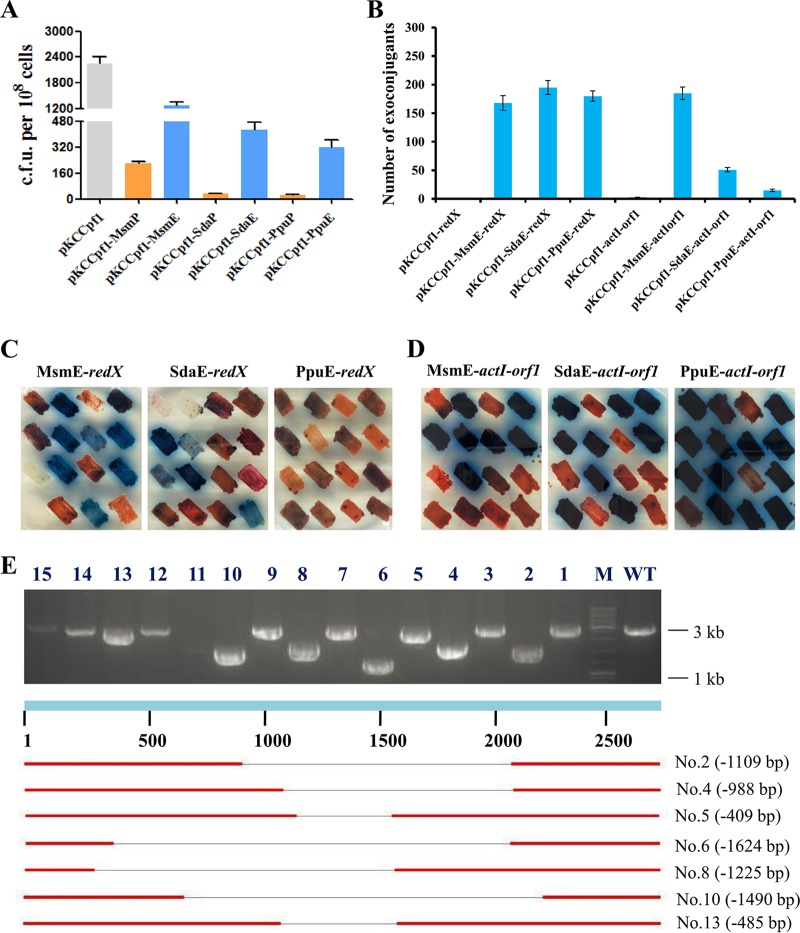FIG 4.
Rapid gene inactivation by the CRISPR/Cpf1 system combined with reconstituted NHEJ pathways in S. coelicolor. (A) Growth of S. coelicolor expressing FnCpf1 with three different reconstituted NHEJ pathways. Based on pKCCpf1, six editing plasmids containing the reconstituted NHEJ pathways, namely, pKCCpf1-MsmP, pKCCpf1-MsmE, pKCCpf1-SdaP, pKCCpf1-SdaE, pKCCpf1-PpuP, and pKCCpf1-PpuE, were constructed, in which the coexpression of ligD and ku genes from M. smegmatis, S. daghestanicus, or P. putida was driven by the strong promoter gadphp or ermEp*. (B) Effects of FnCpf1-induced DSB repair by three different NHEJ pathways on two target loci, redX and actI-orf1. (C, D) Phenotypic analysis of redX or actI-orf1 inactivation by FnCpf1 combined with the NHEJ systems. The strains with redX inactivation produced only blue-pigmented ACT on R2YE plates (imaged at 48 h). In contrast, these strains with actI-orf1 inactivation produced only red-pigmented RED on R2YE plates (imaged at 72 h). Fifteen random exoconjugants were randomly picked for phenotypic observations; the strain in the top right corner represents the wild-type in each group. Due to the good data repeatability, we show the results of the first phenotypic analysis only. (E) Large random-sized deletions in the redX gene caused by FnCpf1 combined with the Msm-NHEJ system.

